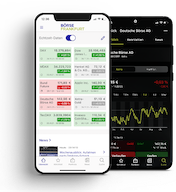"Stocks, bonds, cash: What will drive returns over the next ten years?"
3 November 2025. FRANKFURT (Envestor).
Within a few days, JPMorgan Asset Management and Deutsche Bank presented comprehensive analyses of long-term returns on the capital markets—and, based on these, outlined possible future return paths for equities, bonds, and cash.
The papers “2026 Long-Term Capital Market Assumptions” by JPMorgan Asset Management and “The Ultimate Guide to Long-Term Investing” by Deutsche Bank Research Institute initially offer a wealth of data—many facts that investors may not be aware of—such as the fact that an investment in German bonds between 1910 and 1916 was a total loss in real terms. The 1917 and 1918 issues fared much better. They lost only a mere 99 percent and took just 92 years to return to their initial level. The limited return opportunities offered by bonds proved to be a yield killer in the face of severe inflationary pressures. Government bonds in many other countries were also effectively total losses.
But even those who bear in mind the MSCI World statistics, according to which it is “impossible” to make a loss on shares after 15 years, should take a look at the historical data from the Deutsche Bank study: The stock market slump in Switzerland that began in 1961 did not reach its lowest point in real terms until 1971, and it took 19 years for it to be offset. The maximum loss was almost 70 percent. The slump in Greece that began in 1999 reached its lowest point in 2011 and had still not been offset by the end of 2024.
It is always helpful to take a look at such frightening figures. Not to obtain a blueprint for the future, but to understand what the consequences of wars, political and social crises, and inflation can be. (Investors in Ukrainian securities don't have to go back very far to know what we are talking about!) And anyone who interprets history correctly will understand that even in times of multiple crises, such scenarios are extremely unrealistic – most developed and emerging markets offer higher or lower risk premiums, but a total loss is not to be expected today with a fairly high level of confidence.
So far, so good. Let's now turn to the most important answers to the questions about the long-term drivers of returns on stocks, bonds, and cash.
Equities: The key drivers of returns are growth (particularly technology and innovation), productivity, margin development, dividends, and valuation. In the coming years, AI and tech adoption will initially keep margins high, then shift opportunities to other sectors through broad applications. As a result, US outperformance is less likely in the coming decades. International diversification and the reduction of cluster risks are becoming increasingly important. Active management would have advantages over index investments that reflect the US's tech leadership in the event of a market recalibration.
Bonds: The nominal performance of bonds is determined by initial yields, inflation expectations, monetary policy, and risk premiums. Higher deficits and protectionism will therefore lead to steeper yield curves and thus more attractive bond maturities. Real inflation is crucial: Historically, real bond yields have fluctuated, but have been particularly volatile during periods of upheaval (inflationary spikes, deflationary pressure). Analysts expect higher inflation volatility and wider interest rate ranges until 2026, which will favor high-quality bonds and inflation-protected assets.
Cash: In the short term, cash returns are closely linked to the key interest rate, but in the long term they are limited primarily by inflation trends and crises (e.g., financial crises). In the event of persistent inflation, cash will remain more attractive than in periods of zero interest rates, but in real terms, money market funds are likely to lag behind stocks and bonds in most cases. Investors must therefore always keep an eye on the opportunity costs of cash.
It is interesting to note that both papers clearly advocate the reversion-to-the-mean thesis. In the future, the outperformance and underperformance of the most important asset classes will be driven more by valuation levels than by the potential for technological disruption that is currently driving markets upward. Proponents of the US exceptionalism thesis in particular will take note: technological leadership alone is not enough to ensure future outperformance when valuations are already very high. Given the predominantly optimistic outlook for equities, both firms expect private equity to continue to perform strongly, benefiting from access to M&A, pressure to innovate and, last but not least, the illiquidity premium and active management.
For bonds, the focus is on a regime with greater volatility, higher term risk premiums, differing growth patterns between developed and emerging markets, and a renaissance of risk-adjusted bond returns. More risk, more return, as they say. High-yield bonds are also likely to have an advantage over government bonds as inflation rises, but only for so long. However, if the situation were to change, default risks would rise sharply in the wake of recessions – and then government bonds would be the classic lifeline.
By Ali Masarwah, 3 November 2025, © envestor.de
Über den Autor
Ali Masarwah is a fund analyst and managing director of envestor.de, one of the few fund platforms that pays cashback on fund distribution fees. Masarwah has been analyzing markets, funds, and ETFs for over 20 years, most recently as an analyst at the research firm Morningstar. His expertise is also valued by numerous financial media outlets in German-speaking countries.
This article reflects the opinion of the author, not that of the editorial team at boerse-frankfurt.de. Its content is the sole responsibility of the author.

More articles from this columnist
| Time | Title |
|---|




